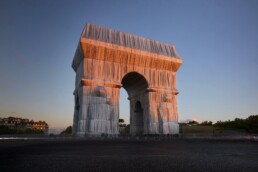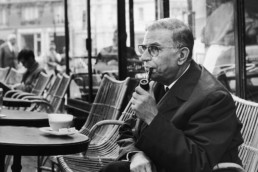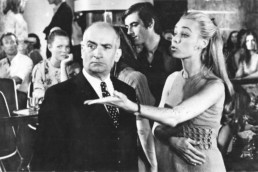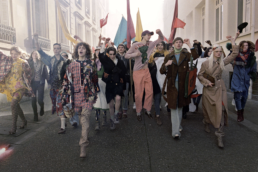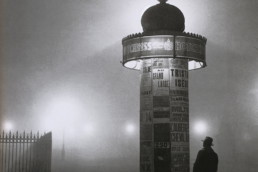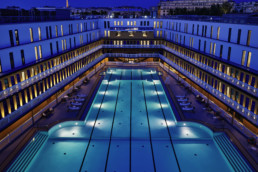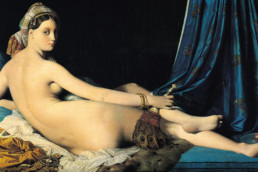Nestled between the majestic wings of the Palais-Royal and just steps from the Louvre, stand the Buren Columns. Famous for their black and white stripes, these columns have become an icon of contemporary art, attracting visitors from around the world. Designed by visionary artist Daniel Buren, they embody creative audacity within a historical setting, creating a fascinating dialogue between past and present.
The story of these columns begins in 1985 when the Ministry of Culture, under the direction of Jack Lang, commissioned Daniel Buren to create a work to transform this historical site. Buren, known for his site-specific interventions, envisioned a series of columns of varying heights, emerging from the ground like a contemporary urban forest, contrasting with the classical grandeur of the Palais-Royal.
The project’s early days were not without controversy. Residents of the neighborhood, deeply attached to the elegance of the Palais-Royal, initially met this avant-garde installation with skepticism. The columns, perceived as a radical departure from traditional aesthetics, sparked heated debates. It is even said that an art critic vehemently declared, “Buren’s stripes are to Paris what scars are to the skin, a wound inflicted on the urban landscape.”
However, over time, the Buren Columns have charmed Parisians and visitors alike with their unique appeal. Their geometric arrangement and interaction with light reveal a new dimension of the Palais-Royal, transforming the courtyard into a space for strolling and reflection. An urban legend even tells of a young couple who, drawn to the uniqueness of the columns, exchanged their vows there one spring morning, adding a romantic touch to the site.
The Buren Columns are not just works of art; they also reflect a period of cultural transformation in France. They symbolize open-mindedness and the integration of contemporary art into the urban landscape. A famous filmmaker, during a location scouting for a film, was so charmed by the columns that he decided to incorporate them into a key scene, where the protagonist, wandering among the columns, finds sudden inspiration for his creative quest.
Over the years, the Buren Columns have become a space for personal expression and interpretation. Street artists have performed impromptu shows, while children, fascinated by the contrasting colors, played hide and seek among the stripes, laughing gleefully. A photographer, seeking unique shots, spent several nights capturing the reflections of the columns under the moonlight, creating a series of photos acclaimed for their dreamlike beauty.
Today, the Buren Columns are an inseparable part of the Parisian landscape, a place where art and everyday life intersect. As visitors wander through this courtyard, they can feel the vibrant soul of Paris, where each column, each stripe, tells a story of creativity, controversy, love, and discovery.
Thus, the Buren Columns, with their bold presence and apparent simplicity, continue to fascinate and inspire, reminding us that art is a universal language, capable of transcending eras and touching the hearts of those who venture to discover them.
Lire également :
9 November 2024
Wrapped Memories: Christo’s Arc de Triomphe
29 May 2019
Jean-Paul Sartre
28 May 2019
Geneviève Grad
29 May 2018
Gucci’s “Paris 68” Campaign
21 June 2017
The History of the Morris Columns in Paris
21 June 2017
Molitor: Paris’ Timeless Oasis
22 May 2017
The “Collier de Chien” Bracelet by Hermès
21 January 2017




